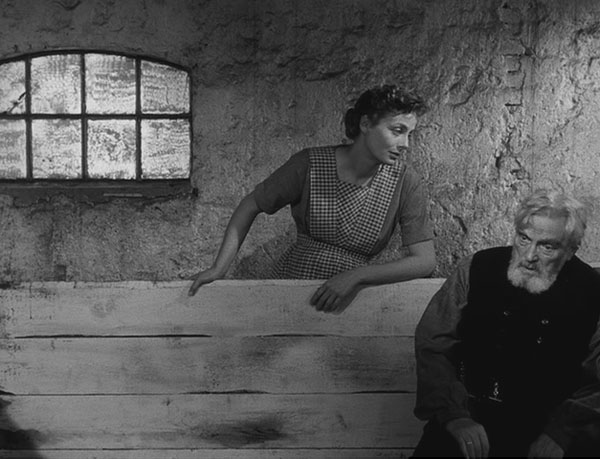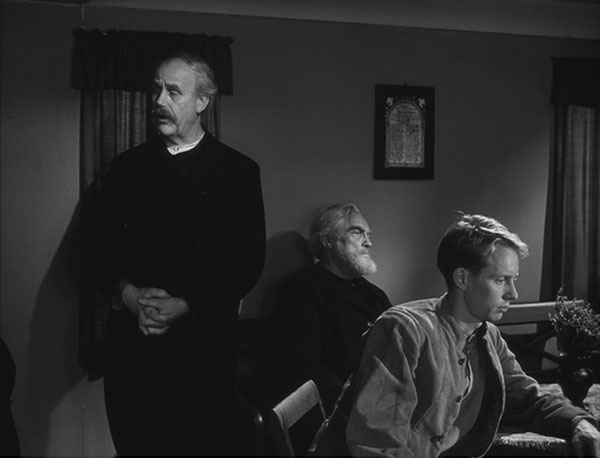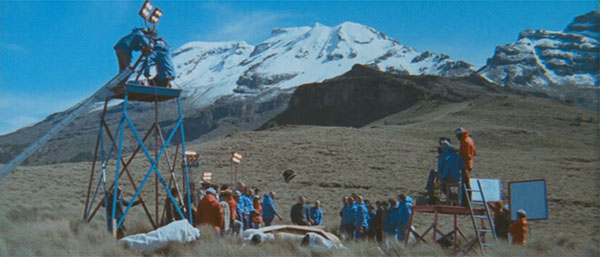While watching The Story of Film, I’ve been marking down the names of movies Mark Cousins discusses which I haven’t seen. And since I love lists, I thought I’d pick one title per Story episode and watch it, more or less chronologically. I call it The Story of Film Festival.
For years I’d been meaning to watch Birth of a Nation, then after reading Rosenbaum’s article about the AFI 100 list, I’ve been meaning to watch Intolerance instead. I’ve enjoyed some of Griffith’s shorts (A Corner in Wheat, The House with Closed Shutters) but never tackled any of his features, which seems a major oversight considering how important they were in film history (or in “the story of film”). While watching Intolerance, I dutifully noted Griffith’s pioneering editing style. I marvelled at the few extreme close-ups and dolly shots, a couple apparent crane shots, and heaping tons of cross-cutting, both between and within the four different time periods. But besides the academic interest, I found the movie boring and heavy-handed. It could’ve used a couple rewrites – the four stories of intolerance told simultaneously don’t work well together, and two of them (Paris and Judea) don’t work at all. Maybe this is because of deleted scenes, but I certainly don’t wish for the movie to be longer. Hopefully I’ll end up enjoying his shorter, more personal stories like Broken Blossoms and True Heart Susie more than this one, but now I’m in no hurry to watch those.
“Out of the cradle endlessly rocking.”

Lillian Gish (star of Broken Blossoms) rocks this cradle meaningfully beneath a sunbeam whenever Griffith lacked a good transition scene between time periods.
In the “present” of the 1910’s, wealthy Mary Jenkins, “unmarried sister of the autocratic industrial overlord” is ignored at a party and so “realizes the bitter fact that she is no longer a part of the younger world.” So she joins a stuffy ladies’ reform club dedicated to the “uplift of humanity” (read: censorship, prohibition, and making things generally boring).
Meanwhile, the father of The Dear One (ugh) works at the Jenkins factory. The mill orders a wage cut (to conserve funds for Mary’s reform group), a strike ensues, lots of cannon fire (reportedly modeled after a bloody strike at a Rockefeller factory). The Boy’s father dies (excuse me, “the Loom of Fate weaves death” for him). The surviving protagonists move to the city, where The Boy and “The Friendless One” get tangled up with gangsters (“musketeers”) and Dear One’s dad dies (sorry, “inability to meet new conditions brings untimely death” to him). Boy and Dear are to be married, but his boss doesn’t like quitters, plants stolen goods on the Boy which “intolerate him away for a term” in prison, because the titles love to use that word even when it doesn’t fit. While he’s in prison, his Dear wife has a baby, which is taken away by the Intolerant reformists and raised by careless nurses.
Friendless Miriam Cooper, actually married to Raoul Walsh:

In ancient Jerusalem, there’s some stuff about hypocrites among the pharisees, funniest part of the movie. Jesus turns water to wine, proving that he is on the side of fun, not like the stuffy ol’ reform club of the present-day scenes. Then this whole segment is forgotten.
A hypocritic pharisee, probably not played by Erich von Stroheim:

In 1570’s France, the catholic king’s mother hates the Hugenots (protestants), and despite some royal wedding that’s supposed to bring peace, she schemes to destroy them. Meanwhile, down in the peasantry, Brown Eyes is dating Prosper Latour (the great Eugene Pallette of The Lady Eve – weird to see him young and silent).
The King with mum Josephine Crowell, who’d play queens in The Man Who Laughs and The Merry Widow:

Protestant leader Admiral Coligny: Joseph Henabery, a prolific director who also played Lincoln in Birth of a Nation

At the Great Gate of Babylon in 539 B.C. (an intertitle brags about the movie’s life-size replica walls), the Rhapsode (Elmer Clifton, prolific director of westerns in the 40’s, also made the marijuana scare flick Assassin of Youth) is a warrior poet, agent of the High Priest of Bel, who falls for a Mountain Girl (Constance Talmadge, with the most modern look in the movie, despite wearing a hat that looks like a spinach salad with olives). Their leader is great and Tolerant, but the high priest is annoyed that some people worship a rival goddess, so he schemes to assist the Persians when they attack Babylon by having the impenetrable gates opened for them.
Mountain Girl joins in the battle:

So all the stories (not counting Judea) are about poor, pretty girls having their lives ruined because of greedy decisions made by rich, powerful people. The movie is incredibly obvious, so I got bored and spent much of the second half imagining the bloody murder of everyone involved. And then that’s pretty much what happened.
But first – two doves pull a chariot carrying a rose:

In the present: “When women cease to attract men they often turn to Reform as a second choice” – cue montage of the ugly women of the reform movement. But the reformists’ actions have simply moved the drinking and partying underground, where it’s more dangerous for being unregulated. The Boy returns home, the Musketeer gets involved in their lives again, then the jealous Friendless One kills him. Boy is blamed and sentenced to hang, but T.F.O. confesses at the last minute, so a car carrying her races to beat the governor’s train and stop the execution in time.
Robert “Boy” Harron (star of Griffith’s True Heart Susie, who killed himself in 1920) with Dear Mae Marsh (appeared in small roles in John Ford movies through the mid-60’s):

Babylon is attacked by Persian “Cyrus, world-conqueror” with his sword “forged in the flames of intolerance,” assisted by the jealous high priest. Hilarious moment in the fight when a warrior knocks another’s head clean off – then it happens again, in case you missed it.
In France: The Massacre of St. Bartholemew: a morning army assault on the unsuspecting protestants.
Unsuspecting Prosper (Eugene Pallette!) and Brown Eyes (Margery Wilson, later author of The Pocket Book of Etiquette and The Complete Book of Charm):

After hours and hours of long setup, the movie picks up the pace, cross-cutting between two battles and the final hours before the Boy’s hanging.
Brown Eyes is speared to death while Prosper runs through the city to reach her, then when he curses out the soldiers for killing his beloved, they blow him away with rifles.
Brown Eyes meets spear head:

Every character we’ve met in Babylon is killed, the Mountain Girl shot full of arrows.
But the Boy is spared and reunited with his Dear One, though their missing baby is never mentioned. IMDB says all sorts of alternate versions and deleted scenes exist, one of which shows the baby coming home with them. The site also says that after filming, Babylon was declared a fire hazard, and that Jesus Christ was deported for having sex with 14-year-olds. I need to watch Buster Keaton’s parody (only an hour long) The Three Ages again sometime.
Crazy ending:

People supposedly involved in this movie who appeared in minor roles whom I failed to spot: Tod Browning, Frank Borzage, Douglas Fairbanks and W.S. Van Dyke. Behind the scenes: Erich von Stroheim, Victor Fleming, Billy Bitzer, Jack Conway, Allan Dwan, Gentlemen Prefer Blondes co-author Anita Loos and Howard Hawks head writer Charles Lederer.






































